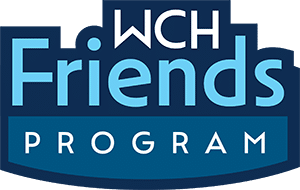
Occupational Therapy (OT) has been used to help brain injury patients improve their overall functioning. But how does OT help brain injury patients? There are many studies on the effectiveness of OT in a variety of impairment categories. So, let’s review some of the ways OT can help those with brain injuries.
Most of the studies completed were specific to traumatic brain injuries. Some studies also included patients who had strokes. The areas assessed were:
- Cognitive impairments
- Visual perceptual impairments
- Motor function impairments
- Social participation and everyday activity impairments
- Community integration impairments
EFFECTS OF OT ON COGNITIVE IMPAIRMENTS
The issue of brain injury caused problems processing by the brain (cognitive impairment). The cognitive impairment encompassed the patient’s ability “to concentrate, think, remember, plan, problem-solve, self-monitor, and execute” goals.
OT practitioners developed individualized plans using many different treatments to benefit brain-injured patients. The outcome of the study showed that OT was impactful on the patients.
The OT practitioner uses repetition to promote habits mentally challenged patients would use to complete their daily living skills. Those patients with mild impairment didn’t see any benefit, but those with moderate to severe impairment saw significant improvements with OT.
EFFECTS ON VISUAL PERCEPTUAL IMPAIRMENTS
90% of brain injury patients have some issue with vision. Patients with visual problems were at higher risk for falls and had a limited ability to walk without assistance.
OT practitioners use visual scanning, which trains your eye to scan right to left. The brain injury patient uses this intervention to locate and identify objects. The study showed strong evidence of improvement with OT intervention using this technique.
EFFECTS ON MOTOR FUNCTION IMPAIRMENTS
Most patients with brain injuries experience motor function impairments. These impairments include:
- Abnormal muscle tone
- Primitive reflexes
- Muscle weakness
- Postural deficits
- Limited range of motion
These impairments made it difficult for the brain-injured patient to perform purposeful activities. With the OT practitioner’s interventions, patients showed improvement in standing, walking, speed, strength, decreased involuntary movements, and muscle tone within 4 to 8 weeks of starting aquatic and other therapies.
EFFECTS OF OT ON EVERYDAY ACTIVITIES AND SOCIAL PARTICIPATION IMPAIRMENTS
The research found rehabilitation approaches and community-based programs improved social interaction. Increased occupational performance of brain-injured patients was also noted. Patients set their own goals for improvement in this area. These interventions enabled, with intermediate evidence, brain-injured patients to improve their social skills.
OT EFFECTS ON COMMUNITY INTEGRATION IMPAIRMENTS
Occupational therapy in a rehabilitation environment was not feasible for patients with mild brain injuries. These patients were returning to work after discharge. But patients with moderate to severe impairment showed intermediate results in the ability to return to work.
Research also showed that OT practitioners were a necessary part of any rehabilitation team.
As you can see, occupational therapy can be essential for the improvement in all areas of impairment for the brain-injured patient. Cognitive, psychological, visual, and motor functions improved in those patients undergoing OT.
ACUTE AND FULL-SERVICE CARE AT WOOSTER COMMUNITY HOSPITAL IN WOOSTER, OHIO
The physicians and staff at Wooster Community Hospital welcome you and look forward to serving you. Wooster Community Hospital has cutting-edge care in a small community environment. Wooster Community Hospital Health System has 8 locations to help you. Call us and allow us to provide for all your medical needs. Call (330) 263-8144 for more information. Wooster Community Hospital also has Telehealth available 24/7 if you need a consultation.

 Cancer Care
Cancer Care
 Rehabilitation
Rehabilitation
 Women's Health
Women's Health
 Behavioral Health
Behavioral Health
 Cardiovascular Care
Cardiovascular Care
 Surgery
Surgery


